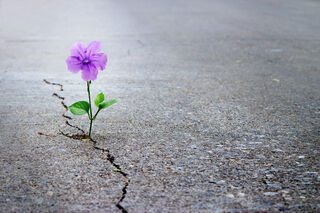Fear
Have You Considered the Power of Hope?
Findings reveal that hope makes a difference physically and psychologically.
Updated December 23, 2023 Reviewed by Ekua Hagan
As life faces us with political uncertainty, racial oppression, the reality of global conflict and the physical and emotional suffering of many, it is worth considering the power of hope.
Reflections on the importance of hope are found in religion, philosophy, literature, and current inspirational thinking.
There is no hope unmingled with fear, and no fear unmingled with hope. — Baruch Spinoza
Hope is being able to see that there is light despite all of the darkness. — Desmond Tutu

Hope is broadly defined as an emotional state that promotes the belief in a positive outcome. Clearly, we need hope, but even as we embrace it, we often wonder: Does hope really make a difference? Is it a myth, fiction, collective denial?
In my clinical experience with people over many years, hope seems to be an important ingredient in the equation of life, adversity, fear, and the courage to keep on moving — be it to try another job, face a medical treatment, or reset trust in a relationship.
Scientific Evidence
There is actually increasing scientific evidence that hope changes us psychologically and physiologically — that it makes a difference.
In his book, The Psychology of Hope: You Can Get There From Here, Charles Synder describes his operationalized definition of hope as the ability to engage in positive goal-directed thinking comprised of two related components: agency (willpower) and pathways (way power). He considers that hope is the sum of the willpower and way power you have for your goals. Snyder’s hope theory is the most widely used theoretical definition of hope in psychology research.
It is operationalized in The Hope Scale (Snyder et al., 1991), a 12-item measure, with four items designed to assess the two facets of hope: pathways and agency. A pathways item would be “there are lots of ways around my problem,” and an item assessing agency would be, “I energetically pursue my goals.”
In a study (Gilman, R., Schumm, J. A., & Chard, K. M., 2011) using the Hope Scale to assess the impact of hope, 64 veterans diagnosed with PTSD and admitted to a Veteran's Administration residential treatment program received six weeks of cognitive processing therapy. Measures of PTSD symptoms, depression, and hope were gathered across the course of treatment. Results revealed that higher levels of hope midway through treatment affected reductions in PTSD and depression from mid-to post-treatment—supporting that hope as defined by the Hope Scale is one nonspecific change mechanism toward symptom reduction.
From Psychology to Economy — The Gift of Hope
A number of years ago, Nicholas Kristoff described a vast randomized study involving 21,000 people in 6 countries over three years. The study recognized that people trapped in a cycle of poverty suffer a poverty of despair, low self-esteem, and hopelessness. As such, they don’t believe they can change their lives through their own activities.
The power of the study is the surprising finding that when people are given a gift of hope — be it a goat or bees, they experience a boost of self-esteem and life circumstances that is self-fulfilling and continues even after the program ends. According to Kristoff, the researchers’ impression of the findings was the exhilaration of learning that the lesson was so simple and human: "the power of hope."
The Physiology of Hope
In his book, The Anatomy of Hope: How People Prevail in the Face of Illness, Jerome Groopman (2004) asks and answers the question of whether there is a biological mechanism whereby the feeling of hope can contribute to clinical recovery.
Drawing upon his experience as an oncologist, Groopman describes his journey from giving a terminal patient false hope by not telling her the truth, to bluntly taking away all hope from another with a dire diagnosis, to finding that any patient needs information, choice, and understanding to truly have hope.
“To hope under the most extreme circumstances is an act of defiance that…permits a person to live his life on his own terms.” (Groopman, 2004, p.81)
Citing research findings from placebo studies in varying medical areas, Jerome Groopman illuminates the way in which belief and expectation, cardinal components of hope, can block pain by releasing the brain’s endorphins and enkephalins—the body’s own version of morphine.
Groopman reminds us that it often takes only a small stirring of possibility to confront despair and elicit the power of hope — a person with chronic illness finds a way to lessen fatigue; a wounded veteran learns to drive again; a senior finds a way to be back in the garden, a person dares to give a miracle a chance.
How Can We Hold On to Hope?
An important factor that is vital to holding on to hope is human connection. In the face of emotional pain and traumatic loss, it is very often another person who stirs and helps us hold on to hope.
Holocaust survivor Elie Wiesel tells us, "Just as despair can come to one another only from other human beings, hope, too, can be given to one only by other human beings.”
It seems that we need hope and that it makes a difference in our lives. Does it dispel all pain, take away all sorrow, and cure all illness? No, but it gives us the courage to keep working, praying, connecting, believing, and moving forward.
Hope is a passion for the possible. — Søren Kierkegaard




